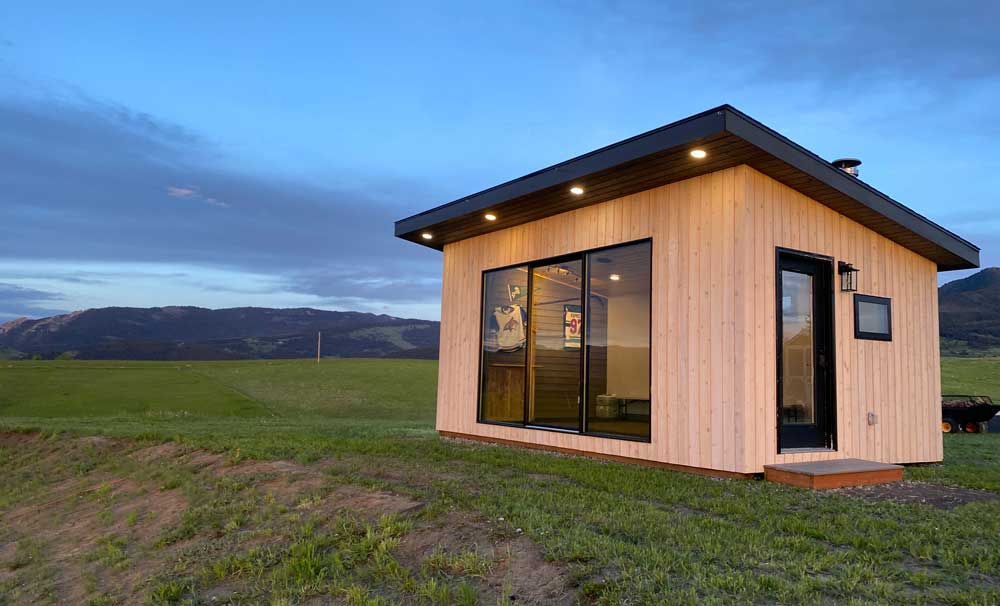
A Modern Spin on the Classic Lean-To Shed: How to Build with Style
The lean-to shed, a venerable structure characterized by its simple, single-slope roof design, has long served as a practical solution for supplemental storage and workspace. However, its inherent practicality needn't preclude aesthetic appeal. This article delves into the construction of a modern lean-to shed, emphasizing design elements that elevate this humble structure to a stylish and functional addition to any property. We will explore material selection, construction techniques, and design considerations to guide you through the process of creating a lean-to that seamlessly integrates with contemporary architectural styles.
I. Design and Planning: Laying the Foundation for a Stylish Shed
Before embarking on the construction process, meticulous planning is paramount. This phase involves several critical steps that will significantly influence the final outcome. A well-defined design not only ensures structural integrity but also enhances the aesthetic integration of the shed within its surrounding environment.
A. Site Selection and Orientation
Choosing the optimal location for your lean-to is crucial. Consider factors such as proximity to existing structures, access to utilities (if required), and sunlight exposure. Ideally, the shed should be positioned to maximize natural light and minimize shading, especially if you intend to use it as a workshop or hobby space. Analyzing the prevailing wind direction will help determine the best orientation for minimizing wind load on the roof.
B. Shed Dimensions and Functionality
The dimensions of your lean-to will be dictated by its intended use. A compact design may suffice for simple storage, while a larger structure might be necessary for a workshop or gardening shed. Carefully consider the necessary storage capacity or workspace dimensions, factoring in ample room for maneuverability. Detailed sketches and plans, even if rudimentary, are highly recommended at this stage.
C. Material Selection: Embracing Modern Aesthetics
The choice of materials plays a pivotal role in determining the overall aesthetic of your lean-to. Departing from traditional materials like weathered wood, consider incorporating contemporary options such as:
- Metal cladding: Provides durability, low maintenance, and a sleek, modern look. Consider corrugated metal sheets in a variety of colors to complement your existing architecture.
- Composite decking: Offers a stylish and low-maintenance alternative to traditional wood decking for the floor and potentially the exterior walls.
- Corten steel: A weathering steel that develops a distinctive rust-like patina over time, adding a touch of industrial chic to the design.
- Reclaimed wood: Provides a unique character and sustainable alternative. However, ensure the wood is properly treated for weather resistance.
The selection should reflect your personal style and complement the surrounding environment. The use of contrasting materials can add visual interest and enhance the overall design.
II. Construction: A Step-by-Step Guide
The construction phase demands precision and adherence to building codes. Ensuring a solid foundation is critical for a stable and long-lasting structure. While employing professional assistance is always advisable for complex projects, many aspects of lean-to construction can be undertaken by skilled DIY enthusiasts.
A. Foundation Construction
The foundation type will depend on factors like soil conditions and shed size. Options include concrete slabs, concrete piers, or a gravel base, depending on the local building codes and the weight of the shed. Proper drainage is vital to prevent water damage. A level foundation is crucial for ensuring the structural integrity of the entire shed.
B. Framing and Structure
The framing of the lean-to is relatively straightforward. Pressure-treated lumber is typically used for the framework, providing resistance to rot and insect damage. Precise measurements and cuts are essential to ensure the structural soundness of the walls and roof. The single-slope roof is supported by rafters that are attached to a ridge beam and rest on the supporting wall. Consider using engineered wood products for enhanced strength and durability.
C. Roofing and Cladding
The chosen roofing material will determine the installation method. Metal roofing is relatively straightforward to install, requiring appropriate fasteners and sealant to ensure watertightness. For other roofing materials, such as asphalt shingles or composite tiles, follow manufacturer instructions meticulously. The cladding installation follows the framing, ensuring proper alignment and overlap to prevent water ingress. Consider incorporating insulation within the walls and roof for improved energy efficiency.
D. Doors and Windows
Strategic placement of doors and windows can significantly enhance the functionality and aesthetics of the lean-to. A well-positioned door allows for easy access, while strategically placed windows provide ample natural light and ventilation. Consider using modern, energy-efficient windows and doors that complement the overall design.
III. Finishing Touches: Elevating the Design
The finishing touches are what truly transform a functional structure into a stylish and inviting space. Paying attention to detail during this phase will enhance the overall aesthetic appeal and functionality of the shed.
A. Exterior Finishes
Consider adding exterior lighting to enhance safety and security. Careful landscaping around the shed can help integrate it seamlessly into the surrounding environment. Consider the use of hardscaping elements such as pathways or patios to enhance the overall aesthetic.
B. Interior Finishes
The interior finish will depend on the intended use of the shed. For a workshop, consider durable flooring and ample workbenches. A storage shed may benefit from shelving units and efficient organization systems. Interior lighting is essential, and the type chosen will depend on the intended use. Consider adding electrical outlets for added functionality.
C. Sustainable Considerations
Incorporating sustainable practices throughout the construction process can enhance the environmental footprint of your lean-to. Consider utilizing reclaimed materials, energy-efficient lighting, and water-saving fixtures wherever possible. Proper waste management during construction is also crucial.
By carefully considering the design, material selection, and construction techniques, you can create a modern lean-to shed that transcends its functional purpose and becomes a stylish and valuable addition to your property. This guide provides a framework; remember to always consult local building codes and seek professional advice when necessary to ensure a safe and successful project.


0 comments:
Post a Comment
Note: Only a member of this blog may post a comment.